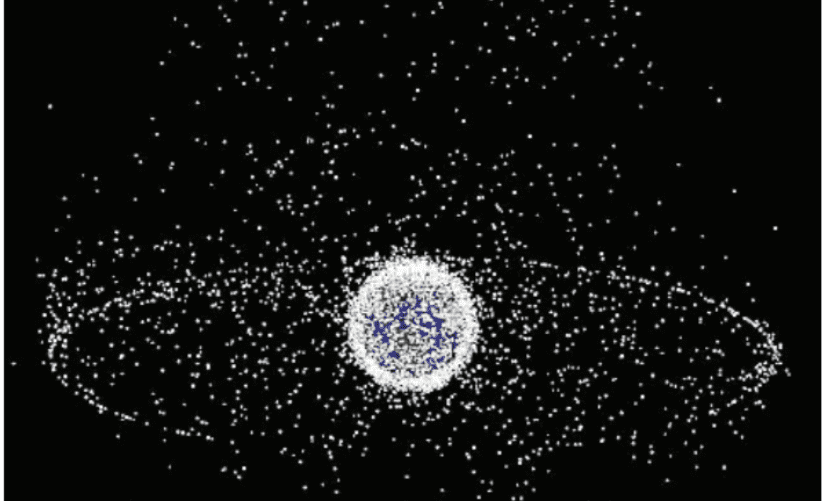
Harmful and poisonous substances because of human activity have been polluting the earth for a very long time. Vital resources such as the air, water and land have succumbed to pollution. Humans through the years have developed immensely, but the repercussions for these technological developments have been severe. The beginning of human space exploration in 1957 opened a new, unanticipated realm of pollution. Non-functional, artificial objects like rocket parts, defunct satellites, launch release rubble, etc. all constitute space debris. Ever since The Soviet Union’s launch of Sputnik I in 1957, space debris has been accumulated and floating freely in space. This debris is also commonly labelled as ‘space junk’. The increasing amounts of debris are orbiting the earth, creating concern for physical collisions during new launches. NASA reveals over 30,000 objects in space, trav- elling at high speeds orbiting the earth. They travel at up to 18,000 miles an hour and risk the chances of unintentional and unwanted collision. The most recent instance occurred in 2021, when a Chinese military satellite, Yunhai 1-02 spontaneously, degenerated in the earth’s orbit, adding to the space junk. The cause of the disintegration was later revealed to be the collision of the satellite with a piece of space junk. Spacefaring nations have been taking steps towards mitigating the problem of space debris. Although countries are taking measures to prevent unnecessary debris while venturing into space, they are not enough to minimise the rubble accumulated over the past sixty years. Countries are developing technologies to create reusable rockets to prevent the drifting away of rocket boosters into space. Other measures include developing sturdier rockets and even creating a ‘graveyard orbit’ for all the junk, which would be far away from the earth and a place to eject the defunct debris. China recently took a step towards space debris mitigation with the launch of their Shijian-21 satellite on 24 October 2021. The Shijian-21 satellite will extensively be used to test and verify space debris mitigation technology. India, too, is working on various debris mitigation technologies. K. Sivan, the chairperson of ISRO, said at an event that “ISRO initiated 46 technological endeavours such as quantum communication, space-debris mitigation technologies like self-eating rockets, self-vanishing satellites and robotic arms to catch space debris,” Various initiatives such as Space Sustainability Rating are promoting global solutions for space debris mitigation. Such initiatives provide all spacefaring nations with basic guidelines that they must follow. The European Space Agency has also commissioned projects for debris mitigation, the proof of concept for which will be launched by 2025. The earth’s orbit is used for various exploration and now space travel purposes. It is pertinent that we mitigate the debris and further carry out space missions sustainably so that our future generations can enjoy the benefits of space exploration as well.
10 Jan 2022
Aadhya Venkatesh